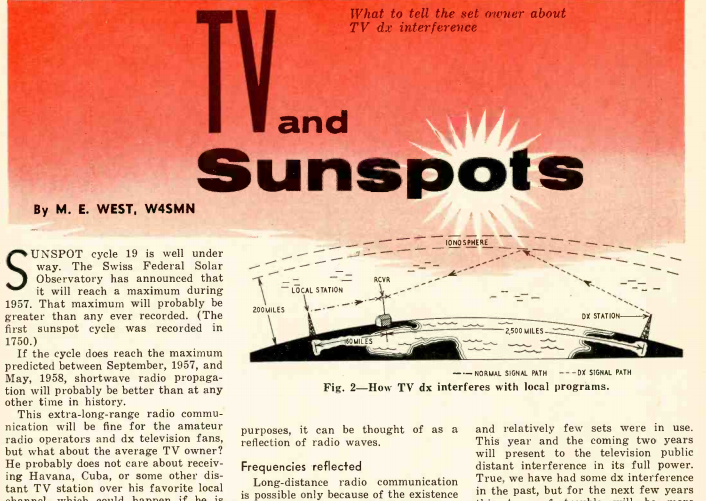 Sixty years ago, solar activity was at an all-time high, and the sun was plastered with sunspots. This was good news for hams, who depend on this solar activity for ideal radio communications on the high frequency bands. But in addition to being literal dark spots, this was, figuratively a dark time for the hapless TV repairman in fringe areas, because it fell upon him to explain to his customers that their interference woes weren’t his fault, but were instead caused by blotches on the sun.
Sixty years ago, solar activity was at an all-time high, and the sun was plastered with sunspots. This was good news for hams, who depend on this solar activity for ideal radio communications on the high frequency bands. But in addition to being literal dark spots, this was, figuratively a dark time for the hapless TV repairman in fringe areas, because it fell upon him to explain to his customers that their interference woes weren’t his fault, but were instead caused by blotches on the sun.
Fortunately, the TV repairman got some sympathetic advice from this article in the August 1957 issue of Radio Electronics.
It starts by noting that Sunspot Cycle 19 was about to reach a peak, which was good news for hams and shortwave listeners, for whom shortwave propagation would be better than at any other time in history.
But the average TV owner “probably does not care about receiving Havana, Cuba, or some other distant TV station over his favorite local channel,” which was a distinct possibility in fringe areas. The article noted that this would be particularly an issue for channels 2, 3, and 4.
The article counseled the serviceman on how to deal with these calls. And unfortunately, there was little that could be done, other than to “explain to the owner what is happeninng and that the condition will probably pass in a short while. Ask him to call the next day if the trouble is still there.”
The article suggested that a good way to educate the customer would be to draw a sketch of the earth and ionosphere as shown above. While reorienting the antenna might help in some cases, the best advice was to hope that the owner understood what was happening. If the customer understood, it would make him “less likely to call a service technician and thereby leave the technician more time to devote to true television troubles.”
